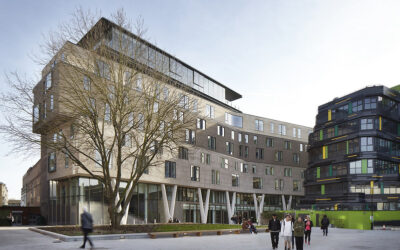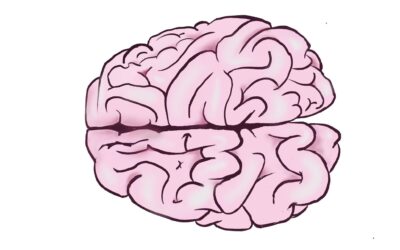What happens to your lungs when you smoke?
By Anoushka

If people smoke many cigarettes for a long time, they will often develop a lung disease called COPD – chronic obstructive pulmonary disease. This makes them feel breathless, especially when doing exercise, and gives them a grumbly cough that brings up frothy white phlegm. COPD develops in smokers because harmful chemicals (especially tar and tobacco) in cigarettes cause lung damage which activates the immune system.
How does COPD develop?
Usually, big fat cells in the airways called goblet cells make mucous that traps inhaled dirt, then neighbouring cells with little hairs on the end called ciliated cells sweep the mucous out of the airways for coughing up as phlegm or swallowing down the oesophagus for digestion in the intestines.
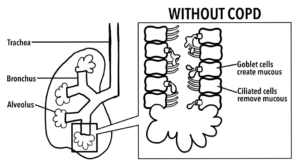
The tobacco and tar in cigarettes is an example of inhaled dirt. The goblet cells must create so much gunky, grimy mucous to trap this extra dirt that the ciliated cells aren’t strong enough to sweep all of it up the airway.
Smokers must therefore cough extra hard to try and remove extra mucous.
Despite the best efforts from ciliated cells and fervent coughing, some gunky grimy mucous remains in the lungs.
This mucous sinks down through the airways into the alveoli (little stretchy air sacs which expand then contract as the person inhales then exhales). This makes the alveoli less stretchy, so breathing is less effective. This is called emphysema.
Mucous also stimulates the immune system to create inflammation in the airways. This makes the airways narrower, so breathing is more difficult. This is called chronic bronchitis.
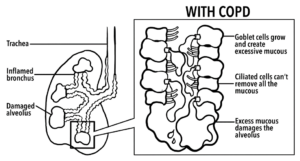
Can COPD be treated?
Patients with COPD rely heavily on inhaled medications to help their breathing.
There’s three main types of medication used in COPD – called Beta Agonists, Muscarinic Antagonists and Corticosteroids.
- Beta agonists increase actions of the sympathetic nervous system (SNS). The SNS puts the body in “fight or flight” mode – for example by widening the airways to enable deeper breathing while running and fighting.
- Muscarinic antagonists decrease the actions of the parasympathetic nervous system (PSNS). The PSNS puts the body in “rest and digest” mode – for example, by constricting the airway because the body doesn’t need to breathe so deeply if it’s resting and digesting.
- Corticosteroids prevent the immune system creating too much inflammation so that the airways don’t get too narrow.
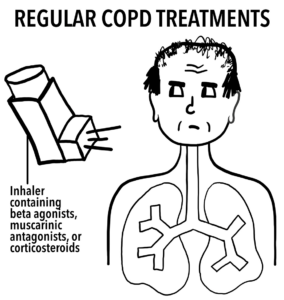
If COPD patients are rushed to hospital with a “COPD exacerbation” (feeling dangerously short of breath with increasingly excessive phlegm), the treatments are slightly different.
- If the patient does not have enough oxygen in their blood, they are given a facemask through which they can inhale more oxygen.
- If the patient has a bacterial chest infection that caused the exacerbation, they are given antibiotics.
- Patients are given extra doses of inhaled beta agonists, muscarinic antagonists and corticosteroids to widen their airways and decrease inflammation as quickly as possible.
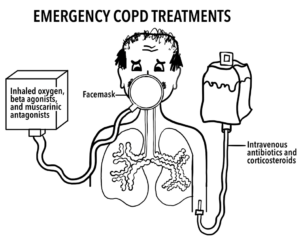
Despite these clever treatments, COPD is a very unpleasant disease to develop and it generally worsens as patients get older. COPD mainly occurs in smokers, although people who live in polluted environments are also at increased risk. Smokers and those breathing lots of pollution are also at increased risk of developing lung cancer. In conclusion, it is very important that we look after our lungs, avoid cigarettes, and reduce air pollution where possible.
